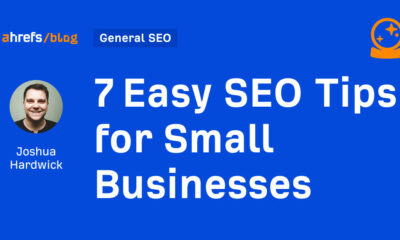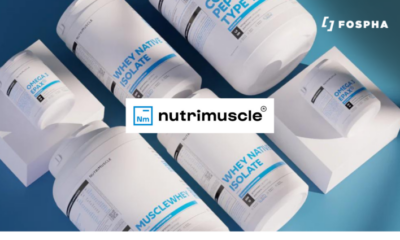When an economic downturn strikes, what’s the first thing you do?
Eliminate wasteful spending.
As marketers, we know well that our budgets are the first to get cut. Marketing is notoriously undervalued, even though research shows that companies who didn’t cut their marketing spend during a recession actually bounced back more strongly than those who did.
However, this doesn’t change the fact that we all have a target on our backs, no matter our talent or seniority. And now that we’ve officially entered a bear market, uncertainties will only continue to grow. Regardless of your budget or headcount, it’s essential now more than ever to ensure no ad dollar is wasted by optimizing the ad-to-website experience.
Here are four ways you can make the most of your marketing budget while driving meaningful results for your business.
1. Audit your ads
No matter how hard you work to maximize your marketing spend, there will always be at least one campaign or channel that just isn’t giving you the most bang for your buck. In fact, studies show that 26% of marketing budgets are wasted on ineffective channels and strategies.
While this is a common problem among marketers, you need to be particularly aggressive about maximizing ad spend in a period of economic uncertainty. Ensuring you’re not wasting a single ad dollar, impression or website visit should be your north star right now. In order to do this, you need to review your current advertising efforts to understand what’s working and what’s not.
As you review your ads, ask yourself these questions:
- Targeting: Is everyone on your list the best fit for your brand or product, or can you narrow down your targeting further? It may cost more, but they’ll be higher quality and more likely to convert.
- Engagement: What is your cost per click and cost per conversion? Which ads are driving the most engagement and which are driving the least? Are the most engaging ads also your biggest revenue generators? If not, go back and revisit your targeting.
- Landing pages: Is there continuity from your ad to your landing page? Is the landing page static, or does it dynamically adjust based on the visitor or buyer segment? Beyond brand continuity, you’re also looking to deliver a seamless buyer experience.
- Channels: What is your spend and ROI for each channel? Which channels are driving the most conversions and which are driving the least? Are you hitting the benchmarks for those channels for your industry? If you don’t know what the benchmark is, ask your rep—they all have baseline benchmarks per industry.
- Bidding: Are your bids manual or automated? How can you optimize them for maximum reach and budget efficiency?
2. Test, test, test
Being agile is one of the best qualities you can have as a marketer in an economic downturn, so use this as an opportunity to prove your value. If you’re going to make every ad dollar count, you need to test your messaging before launch, optimize your creative throughout and constantly optimize your website and landing pages toward conversions throughout the entire lifecycle of each campaign.
Whether you choose to A/B test, use rules, or choose Continuous Conversion to “always be testing” it can take a lot of time and resources you might not have. Consider how AI and machine learning can help you optimize your ads and landing pages to increase lift all while delivering a seamless ad-to-website brand experience to your customer.
3. Protect the customer experience
All too often we spend so much time perfecting our ad copy or visuals that we forget about the post-click portion of the customer journey. But when we take the time to optimize the entire customer experience from the first touch to last, that’s when we see big results.
It’s no secret that customer experience has become one of the most important components of a purchase decision for B2B and e-commerce customers alike. Eighty percent of customers say they are more likely to purchase from a brand that offers a personalized experience. And while personalizing your ads is important (and is appealing to 90% of customers), it is just as essential to optimize and personalize all of the touch points that come after.
Here are a couple of ways you can create a seamless customer experience to boost campaign conversions and customer loyalty:
- Take the time to truly understand your audience. Thoughtful research will not only help you target the right segments but will help you craft messages that resonate with them once you understand their hearts and minds. This is why it is paramount to look at both quantitative (e.g. analytics) and qualitative (e.g. heatmaps, surveys, chatbot logs) data to get a full picture of your customer behavior and motivations. Once you flesh this out you can then serve up dynamic content specific to the ad they clicked on, whether they’re a new or repeat visitor, which products or pages they have visited previously, and other contextual and firmographic attributes so you can deliver the right experience at every touchpoint.
- Test everything. When you test, you cannot fail. Even when you carefully research your audience, you still need to remove assumptions from your marketing and test everything in the field. Our world is always changing, and so are your customer’s needs and context. When you approach every single step of your customer journey with a testing mindset, you’ll generate continuous learnings about your audience and better predict how they will behave. With these learnings, you can optimize your entire customer experience so that it resonates with your customers at any given time and compels them to convert.
4. Lean on automation
We know these first three tasks are no small feat, which is why it’s essential to lean on automation to continuously optimize your ad spend, landing pages and customer experience.
Automation is key to doing more with less and driving greater efficiencies at scale. When set up properly, your good ideas combined with automation are like a superpower. It saves you valuable time on tedious or complex tasks so you can put more effort into what you do best: coming up with great ideas to connect with your audience and deliver them the best experience.
While automation can’t do everything for you, here are a few things it can help you with:
- Programmatic advertising: This marketing strategy automates the purchasing of your ads through a real-time bidding process so you can deliver hyper-targeted ads to the right audience (and without all the work!). Plus, you only pay for relevant impressions and have control over the price, frequency, goals and targeting.
- Segmentation: Automated segmentation allows you to take people who have seen your ads and automatically group them together based on their shared characteristics. Using these segments, you can create hyper-personalized experiences based on those attributes and save a lot of time, money and resources.
- Website personalization: Your end goal is to drive people to your website and get them to take action, and automated website personalization goes a long way toward that conversion. Using an AI-powered personalization solution, you can dynamically deliver a hyper-personalized website experience that matches each unique visitor’s needs. A great machine learning solution will be continuously learning and improving to adjust the experience in real-time to audience and market behaviors without the need for constant babysitting.
Final thoughts
Remember, when you test you cannot fail, machine learning is your friend, and nothing is set on rinse and repeat. When you take an iterative approach to your digital advertising, you’ll look like a marketing hero.
For even more tips to optimize your ads and landing pages, read this blog.


































You must be logged in to post a comment Login